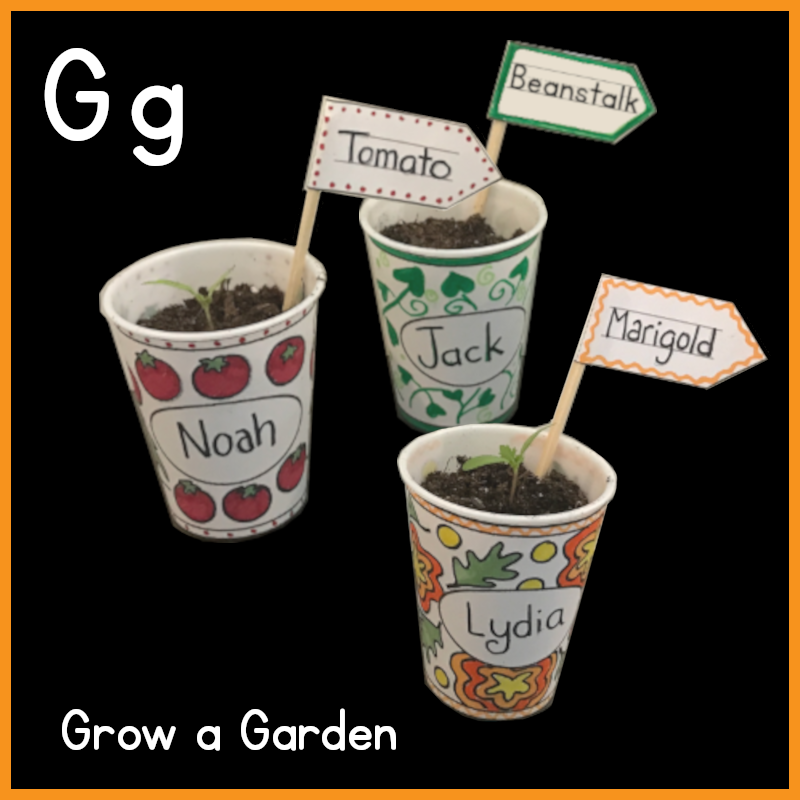GROW A GARDEN
Early spring is a great time to start seeds indoors. This craft is a wrap around label for a plastic cup and a plant tag to place in the soil. Each student will create their own unique seed pot.
If you want to turn this into a science activity, you can keep a chart of the different kinds of seeds your students are growing. Mark the number of days it took for each type of seed to sprout. When did the leaves open? How tall is the stem one week after sprouting? In two weeks?
SEED FUN FACTS
· Most plants grow from seeds.
· Seeds can be as small as a grain of sand (strawberry seed) or as large as a volleyball (coconut).
· Inside each seed is a baby plant and the nutrients it needs to grow.
· Seeds were the start of human civilization. When Stone Age people learned to gather and plant seeds, they were able to grow their own food. They could settle in one area.
· Seeds can be healthy snacks. You might eat pumpkin seeds or sunflower seeds. Popcorn and nuts are also seeds.
· Cotton seeds are used to make cloth.
· Seeds fall from trees to grow new trees. Trees provide wood for homes and furniture. Trees provide food: Avocados, apples, peaches, bananas, walnuts, almonds, cherries, oranges, coconuts and more.
· Seeds create the plants that make our medicines.

